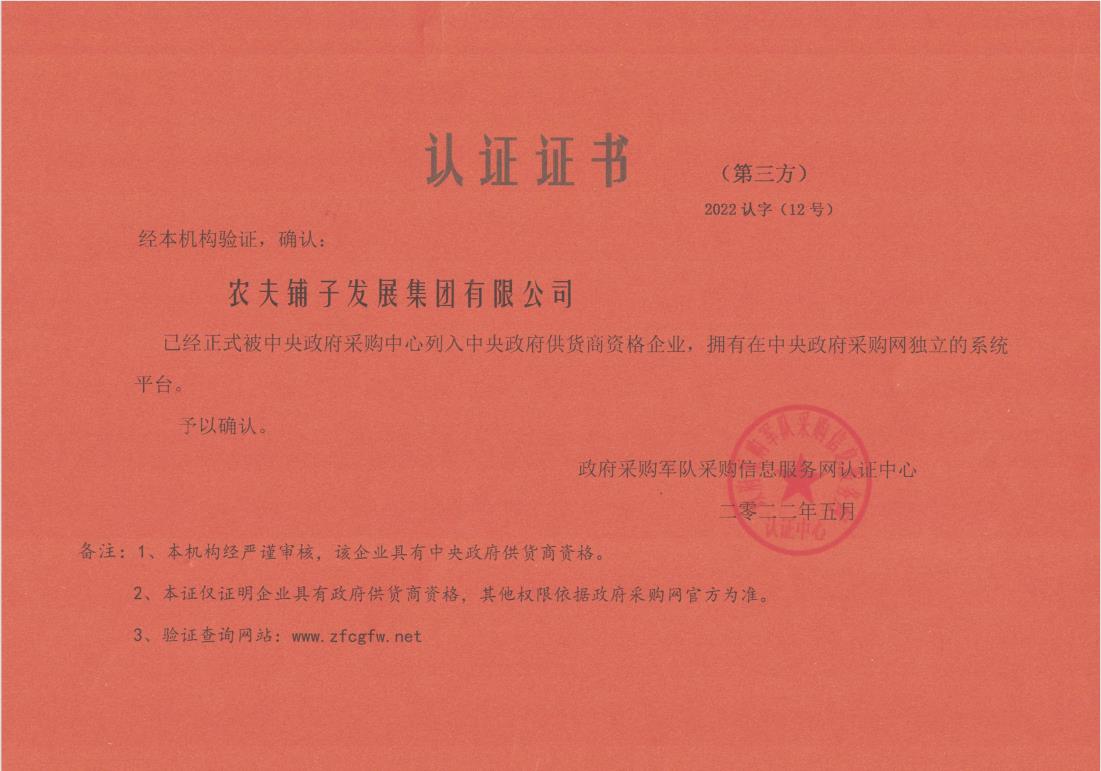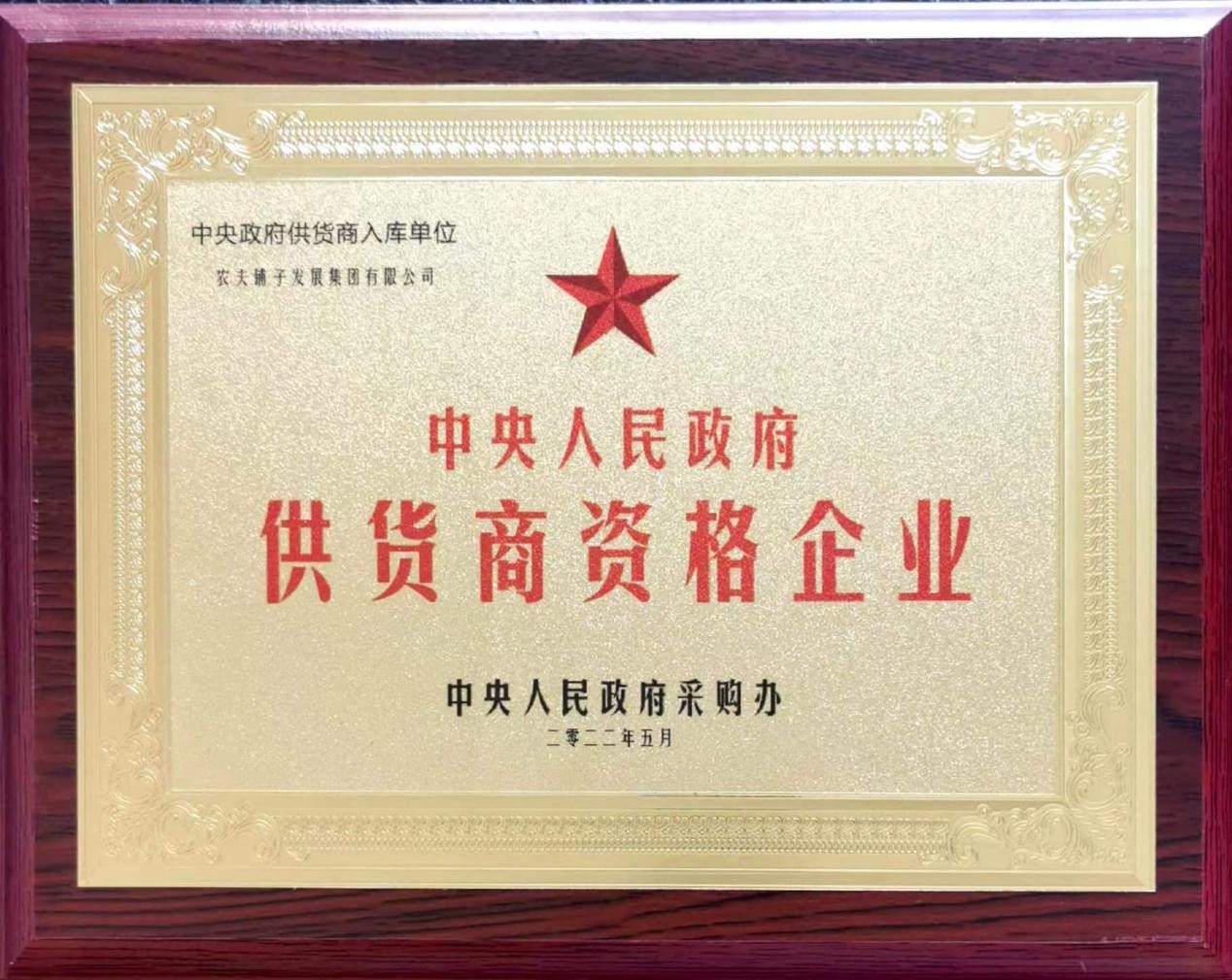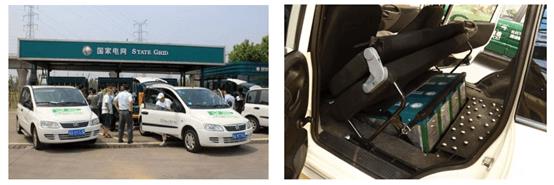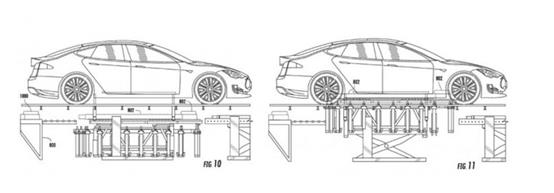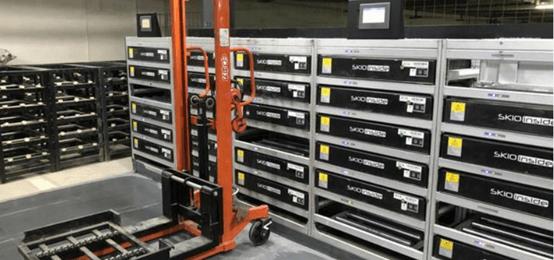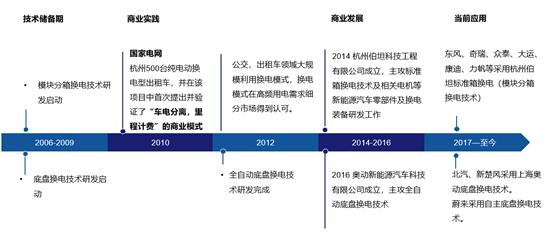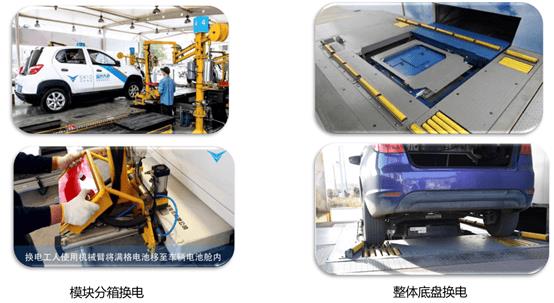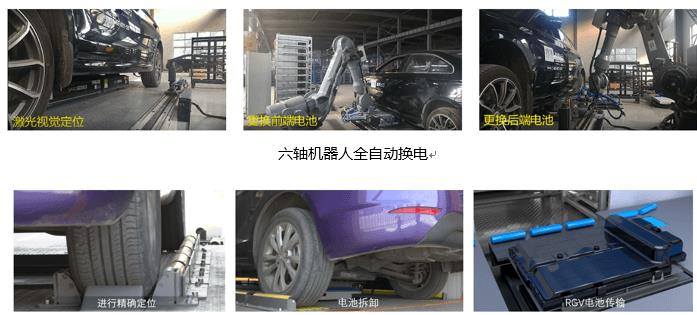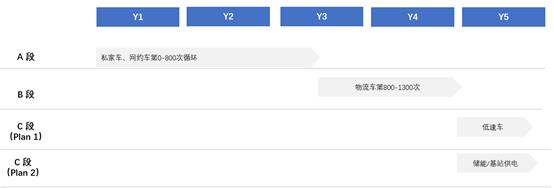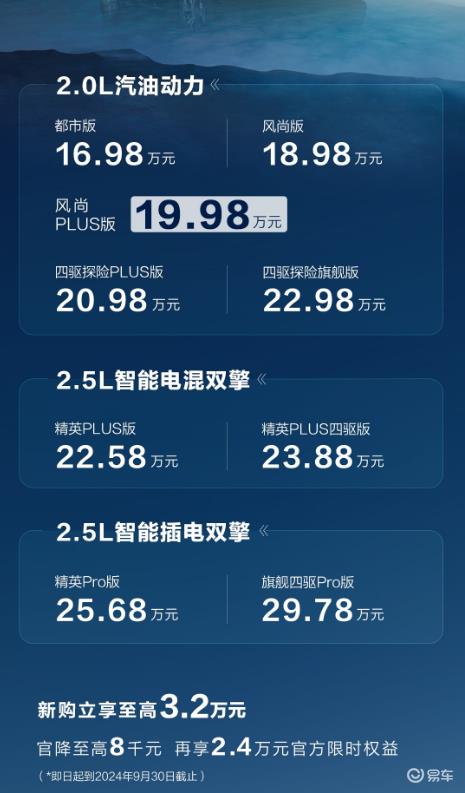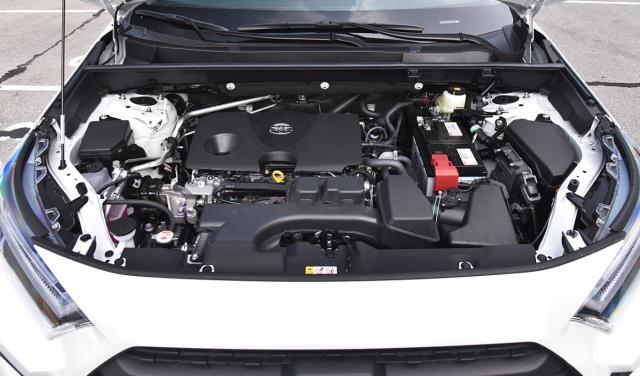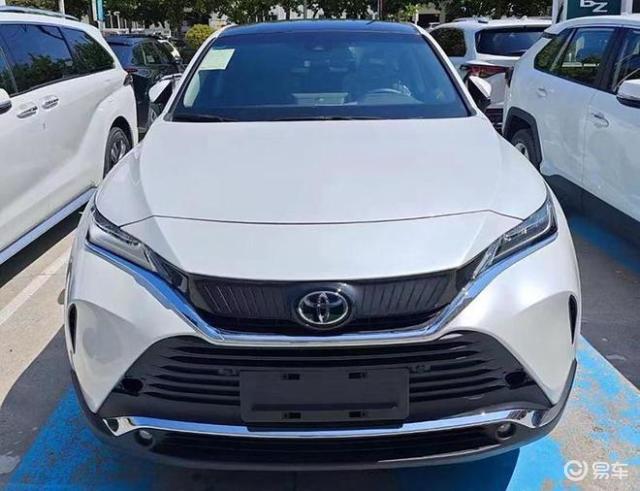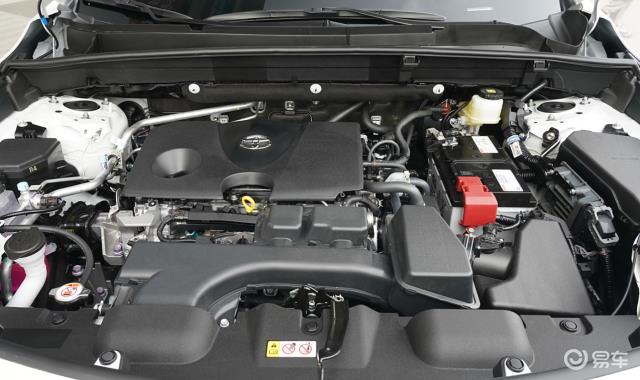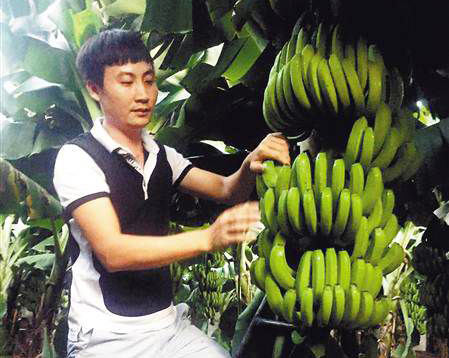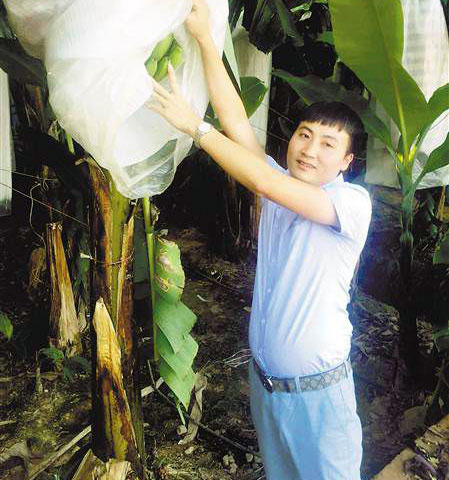Opinions of the General Office of Hunan Provincial People’s Government on the Implementation of Several Provisions on the Safety Management of Residents’ Self-built Houses in Hunan Province
Opinions of the General Office of Hunan Provincial People’s Government on the Implementation of Several Provisions on the Safety Management of Residents’ Self-built Houses in Hunan Province
Xiang Zheng Ban Fa [2023] No.7
The people’s governments of cities, counties and cities, the provincial government departments and commissions, and the directly affiliated institutions:
"Several Provisions on the Safety Management of Residents’ Self-built Houses in Hunan Province" (hereinafter referred to as "Several Provisions") was adopted at the 34th meeting of the Standing Committee of the 13th People’s Congress of Hunan Province on November 23, 2022, and shall come into force on January 1, 2023. In order to do a good job in the implementation of the "Several Provisions", this opinion is formulated with the consent of the provincial people’s government.
I. General requirements
We will fully implement the spirit of the 20th Party Congress and the important instructions of the General Secretary of the Supreme Leader on safety in production, especially the safety of residents’ self-built houses, coordinate development and safety, strictly implement the responsibility of territorial management, strengthen the responsibility of departmental guidance and supervision, compact the main responsibility of those responsible for housing use safety, establish and improve the working system of coordinated joint control, full chain control and closed-loop control, promote the normal and long-term safety management of residents’ self-built houses, and effectively protect the safety of people’s lives and property.
Second, the main task
(A) to strengthen land planning and construction management
1. Strict planning and control. Strictly implement the land and space planning, and basically complete the planning of towns and villages before the end of 2023 to achieve full coverage of village planning; Strengthen the preparation and implementation of detailed planning, clarify the controlling indicators such as land use scope, height and number of floors, strictly implement the provisions that "no new residents’ self-built houses shall be built within the current construction land of cities and counties" and "no new residents’ self-built houses shall generally exceed three floors", and strengthen the control over the number of floors and height of residents’ self-built houses. (Responsible unit: Provincial Department of Natural Resources, people’s governments of cities, counties and cities. The following shall be the responsibility of the people’s governments of cities, counties and cities, and will not be listed)
2. Improve site selection and land use approval services. Carry out risk investigation in areas prone to geological disasters, and formulate risk zoning and control measures; Guide the rational delineation of the scope of construction land, and strengthen the approval of land use and planning for new construction, renovation (expansion) construction and reconstruction of residents’ self-built houses; Guide the Township People’s Government to do a good job in issuing the approval letter of rural homestead. (Responsible units: Provincial Department of Natural Resources and Provincial Department of Agriculture and Rural Affairs. Involving multiple provincial units, each unit is responsible for the division of responsibilities, the same below).
3. Standardize construction approval and supervision. City, state, county and city people’s governments, township people’s governments and sub-district offices shall strengthen the capacity building of residents’ self-built housing safety supervision, and clarify the supervision institutions and personnel. For self-built houses built by residents with three floors or above, if the project investment is more than 300,000 yuan or the construction area is more than 300 square meters (referred to as "self-built houses built by residents above the quota"), the new construction, renovation (expansion) construction and reconstruction shall go through the procedures of construction drawing review, quality and safety supervision, construction permit, completion acceptance and filing according to law, and the county-level housing and urban construction departments shall strengthen daily supervision; Other residents’ self-built houses (hereinafter referred to as "self-built houses for residents below the quota") shall be supervised by the county-level housing and urban-rural construction departments to the township people’s governments and sub-district offices for quality and safety, and random checks shall be conducted according to a certain proportion. The provincial housing and urban-rural construction department shall formulate the management measures for the completion and acceptance of residents’ self-built houses below the "quota" before June 30, 2023, and guide the quality and safety acceptance of residents’ self-built houses in the province. Implement the system of permanent signs embedded in residents’ self-built houses, and implement the main responsibilities related to housing quality and safety. (Responsible unit: Provincial Department of Housing and Urban-Rural Development)
4. Do a good job in information sharing of residents’ self-built houses. Township People’s governments and sub-district offices shall timely send a copy of the construction information of each new building, renovation (expansion) building and reconstruction of residents’ self-built houses to the departments of county-level natural resources, urban and rural housing construction, agriculture and rural areas, urban management and comprehensive law enforcement, and form an information sharing and linkage supervision mechanism. (Responsible units: Provincial Department of Natural Resources, Provincial Department of Housing and Urban-Rural Development, Provincial Department of Agriculture and Rural Affairs)
(two) strict management of self-built houses for residents.
5. Strengthen the management and control of the business format and number of self-built houses for operating residents. Standardize the relevant certification materials submitted for the registration of residents’ self-built houses as the main residence (business premises) of the market. At the time of registration, the owner of the self-built house who uses the self-built house as the main residence (business premises) of the market needs to submit a certificate of ownership of the residence (business premises) and a letter of commitment that each self-built house has no more than three business formats, and is responsible for the authenticity and legality of the materials. The registration authority shall conduct a formal review. The provincial market supervision department introduced the supporting system and management measures for residents’ self-built houses to be converted into business purposes. The municipal and state market supervision, education, public security, commerce, culture and tourism, health and health, emergency management, civil affairs and other departments, in accordance with the relevant provisions of the province, differentiated different business formats to formulate control standards for the number of self-built houses for operating residents, and guided and urged all localities to complete the adjustment of residents’ self-built houses that did not meet the requirements of business formats and numbers before June 30, 2025. (Responsible units: Provincial Market Supervision Bureau, Provincial Education Department, Provincial Public Security Department, Provincial Department of Commerce, Provincial Department of Culture and Tourism, Provincial Health and Wellness Commission, Provincial Emergency Department and Provincial Civil Affairs Department)
6. Strengthen the fire safety management of self-built houses for operating residents. Improve the relevant provisions and technical standards for fire safety management of self-built houses for operating residents, guide and strengthen the fire safety management of self-built houses for operating residents and those with changed use purposes, and urge the implementation of provisions such as the use of fire and electricity, the configuration and maintenance of fire-fighting facilities and equipment, safe evacuation and fire separation, and shall not occupy or block evacuation passages and safety exits. According to the law to carry out the fire design review and acceptance of residents’ self-built houses, and do a good job in daily fire inspection and fire rescue. (Responsible units: Provincial Fire Rescue Corps, Provincial Department of Housing and Urban-Rural Development, Provincial Public Security Department and Provincial Market Supervision Bureau)
7. Carry out insurance services for residents’ self-built houses. We will develop insurance products for the safety management of residents’ self-built houses, and encourage those responsible for the use of self-built houses to purchase housing safety insurance. (Responsible unit: Hunan Banking Insurance Regulatory Bureau)
(3) Strengthen the management of safety appraisal of residents’ self-built houses.
8. Strictly regulate the situation of house safety appraisal. Establish and improve the safety appraisal system for residents’ self-built houses. If houses with obvious subsidence, cracks, inclination and corrosion are found in the safety investigation and rectification, houses damaged due to natural disasters, fires, explosions and other accidents, and houses with other obvious safety hazards endanger public safety, the Township People’s Government and sub-district offices shall urge those responsible for housing use safety to entrust appraisal institutions to conduct safety appraisal. Engaged in catering, accommodation, entertainment, education and training, pension and other personnel-intensive business activities, the responsible person for the safe use of residents’ self-built houses shall obtain the certificate of housing safety appraisal that conforms to the requirements of the business format or the relevant certification materials for the completion acceptance after the renovation (expansion) and reconstruction according to the requirements of the business format, and the relevant information shall be included in the housing safety clear card and posted in a prominent position; County-level market supervision and management, education, public security, commerce, culture and tourism, health, emergency management, civil affairs and other departments shall conduct supervision and inspection according to laws and regulations. (Responsible units: Provincial Department of Housing and Urban-Rural Development, Provincial Market Supervision Bureau, Provincial Department of Education, Provincial Public Security Department, Provincial Department of Commerce, Provincial Department of Culture and Tourism, Provincial Health and Wellness Committee, Provincial Emergency Department and Provincial Civil Affairs Department)
9 clear housing safety appraisal institutions. Provincial Housing and Urban-Rural Construction Department shall improve the normative documents of housing safety appraisal management in a timely manner in accordance with the relevant provisions of the Ministry of Housing and Urban-Rural Development, and the housing and urban-rural construction departments of cities and prefectures shall, before June 30, 2023, combine local conditions, and report the list of institutions with independent legal personality, corresponding professional technicians and professional equipment and facilities engaged in housing safety appraisal to the provincial housing and urban-rural construction department for the record, and make it public for public inquiry. (Responsible unit: Provincial Department of Housing and Urban-Rural Development)
10. Compacting the responsibility of housing safety appraisal institutions. City and county housing and urban-rural construction departments should strengthen supervision and inspection of the authenticity and accuracy of appraisal reports, and city and county market supervision departments should standardize the charging behavior of housing safety appraisal institutions, and severely investigate and deal with acts of issuing false appraisal reports and charging fees in violation of laws and regulations according to law. The appraisal institution shall deliver the appraisal report to the client in time and report to the township people’s government, neighborhood offices and county-level housing and urban-rural construction departments where the house is located; If there is a danger of collapse, the appraisal institution shall immediately inform the client and immediately report to the township people’s government, street offices and county-level housing and urban-rural construction departments where the house is located. Township people’s governments and sub-district offices shall, according to the appraisal report, promptly issue a notice to urge the people to solve the crisis or take emergency measures, and urge those responsible for the safety of housing use to take measures to solve the crisis. (Responsible unit: Provincial Department of Housing and Urban-Rural Development, Provincial Market Supervision Bureau)
(4) Strengthen the investigation and rectification of hidden dangers of residents’ self-built houses.
11. Highlight the key points of investigation and rectification. The people’s governments of provinces, cities, counties and cities shall establish and improve the working mechanism for the investigation and rectification of safety risks of residents’ self-built houses. County and urban people’s governments should guide and urge township people’s governments and sub-district offices to conduct a comprehensive investigation on key areas such as urban-rural fringe, villages in cities, resettlement areas, schools and hospitals, industrial parks, tourist attractions, and geological disaster-prone areas, and strengthen daily inspections, highlighting the inspection of key contents such as structural safety, operational safety, fire safety, and legal compliance of construction. (Responsible units: Provincial Department of Housing and Urban-Rural Development, Provincial Market Supervision Bureau, Provincial Fire and Rescue Corps, Provincial Department of Natural Resources)
12. Improve the effect of investigation and rectification. The investigation activities should involve professional organizations and personnel, and the government can purchase services where conditions permit. The municipal housing and urban-rural construction department shall establish an expert database for investigation and rectification, and make selection and dynamic adjustment from professionals such as design, construction and testing of universities and enterprises. County-level housing and urban-rural construction departments shall guide and urge the Township People’s governments and street offices to put forward written opinions to the person responsible for the safety of housing use in a timely manner if there are potential safety hazards in the houses found in the investigation and daily inspections; If it is found that there are obvious security risks that endanger public safety, it shall immediately take emergency measures and establish a ledger for investigation and rectification work until the hidden dangers of housing safety are eliminated. (Responsible unit: Provincial Department of Housing and Urban-Rural Development, Provincial Department of Finance)
13. The safety management responsibility of the person responsible for the use of compacted houses. According to the principle of "who owns the house is responsible, who uses it is responsible", the owner of residents’ self-built houses is the person responsible for the safety of housing use; If the owner of the house is inconsistent with the user of the house, the owner and the user of the house shall bear the responsibility for the safety of the use of the house in accordance with the agreement. If there is no agreement or the agreement is unclear, the owner of the house shall bear the responsibility for the safety of the use of the house; If the owner of the house is missing or the ownership of the house is unclear, the township people’s government and the street office shall make it clear that the user or manager of the house shall bear the responsibility for the safety of the use of the house. County-level natural resources, housing and urban-rural construction, market supervision, fire rescue, agriculture and rural areas and other departments should guide and urge the township people’s governments and sub-district offices under their jurisdiction to strengthen safety education and training on the site selection, planning, design, construction, use and operation of residents’ self-built houses, and implement the main responsibility of those responsible for housing use safety. Township people’s government, street offices to supervise and guide the use of housing safety responsible person in accordance with the planning purposes, design requirements for rational use, decoration of housing; Do not change the use function of the house, add stories or demolish the main load-bearing structure of the house without authorization; Conduct daily safety inspection, maintenance and repair of houses, and eliminate potential safety hazards in time; Ensure the fire safety of houses; Found that there are serious security risks, should promptly report to the village (neighborhood) committees, and take emergency measures such as suspending use, evacuating people, and setting warning signs; According to the written handling opinions put forward by the notice of danger relief,Take measures such as maintenance and reinforcement, immediate cessation of use, and demolition. (Responsible units: Provincial Department of Natural Resources, Provincial Department of Housing and Urban-Rural Development, Provincial Market Supervision Bureau, Provincial Fire and Rescue Corps, Provincial Department of Agriculture and Rural Affairs, Provincial Department of Education, Provincial Public Security Department, Provincial Department of Commerce, Provincial Department of Culture and Tourism, Provincial Health and Wellness Committee, Provincial Emergency Department and Provincial Civil Affairs Department)
(five) to strengthen the supervision of law enforcement in the whole process of residents’ self-built houses.
14. Strictly implement the department’s law enforcement responsibilities. Self-built houses built by residents who have not obtained the construction project planning permit shall be handled by the urban management and comprehensive law enforcement departments of the people’s governments of cities and counties according to law. Residents who have not built their own houses in accordance with the provisions of the construction project planning permit shall be ordered by the competent department of urban and rural planning of the people’s government of the city or county to stop construction and handed over to the urban management and comprehensive law enforcement departments of the people’s government of the city or county for handling according to law. Residents who have not obtained the rural construction planning permit according to law or have not built their own houses in accordance with the provisions of the rural construction planning permit shall be dealt with by the township people’s government according to law. New construction, renovation (expansion) construction and reconstruction of self-built houses above the "quota" have handled the construction project planning permit or issued the rural construction planning permit, but failed to handle the procedures of construction drawing review, quality and safety supervision, construction permit, completion acceptance and filing according to law, which shall be handled by the county-level housing and urban-rural construction department. In the process of use, if the main load-bearing structure of the house is added or demolished without authorization, the residents’ self-built houses within the scope of the construction project planning permit shall be handled by the urban management and comprehensive law enforcement departments of the people’s governments of cities and counties, and the residents’ self-built houses within the scope of the rural construction planning permit shall be handled by the township people’s governments. Failing to entrust a housing safety appraisal agency to conduct safety appraisal according to law, residents’ self-built houses within the scope of handling construction project planning permits shall be handled by the county-level housing and urban-rural construction departments, and residents’ self-built houses within the scope of issuing rural construction planning permits shall be handled by the Township People’s Government. (Responsible unit: Provincial Department of Natural Resources and Provincial Department of Housing and Urban-Rural Development)
15 clear administrative licensing and administrative punishment delegated matters. The whole process of administrative law enforcement supervision shall be implemented for newly built, renovated (expanded), rebuilt and converted into self-built houses for business purposes. The Township People’s Government shall implement the relevant administrative penalties for the safety management of residents’ self-built houses in charge of the relevant competent departments of the people’s governments at the county level; According to the entrustment of the relevant competent departments of the people’s government at the county level, the relevant administrative license for the safety management of residents’ self-built houses shall be implemented. The relevant competent departments of the people’s governments at the county level may, according to the actual situation, entrust the street offices with the relevant administrative penalties and administrative licenses for the safety management of residents’ self-built houses. The relevant departments of the people’s government at the county level shall publish the list of matters entrusted by administrative licensing and administrative punishment before June 30, 2023. (Responsible units: Provincial Department of Natural Resources, Provincial Department of Housing and Urban-Rural Development, Provincial Market Supervision Bureau, Provincial Fire and Rescue Corps, Provincial Department of Agriculture and Rural Affairs, Provincial Department of Education, Provincial Public Security Department, Provincial Department of Commerce, Provincial Department of Culture and Tourism, Provincial Health and Wellness Committee, Provincial Emergency Department and Provincial Civil Affairs Department)
16 highlight the key points of law enforcement of residents’ self-built houses. Strengthen law enforcement, standardize law enforcement procedures, and focus on strengthening law enforcement supervision over the following acts: construction and use without obtaining or in accordance with the approval, planning permission, construction permit and business license of land and homestead; Adding stories or demolishing the main load-bearing structure of the house without authorization during use; Failing to entrust a housing safety appraisal institution to conduct safety appraisal according to law; The safety appraisal institution issues a false appraisal report; Engaged in personnel-intensive business activities without obtaining the certificate of housing safety appraisal that conforms to the requirements of business format or the relevant certification materials for the completion acceptance after the renovation (expansion) and reconstruction according to the requirements of business format; Residents above the "quota" did not adopt fire separation measures according to relevant standards, the number of evacuation passages and safety exits was insufficient, and electric vehicles were not parked and charged according to relevant regulations. Improve the benchmark system of administrative penalty discretion, so as to enforce the law strictly and in a civilized way. (Responsible units: Provincial Department of Natural Resources, Provincial Department of Agriculture and Rural Affairs, Provincial Department of Housing and Urban-Rural Development, Provincial Market Supervision Bureau, Provincial Fire and Rescue Corps, Provincial Department of Education, Provincial Public Security Department, Provincial Department of Commerce, Provincial Department of Culture and Tourism, Provincial Health and Wellness Committee, Provincial Emergency Department and Provincial Civil Affairs Department)
17. Give play to the role of reporting rewards and punishments and grassroots organizations. The people’s governments at the county level shall establish and improve the complaint, report and reward mechanism for acts endangering the safety of houses and dangerous houses, and publish the complaint and report methods, processing procedures and time limits. The specific reward methods and standards shall be formulated by the people’s governments at the city, state and county levels. Township people’s governments and sub-district offices shall guide and urge the village (neighborhood) committees to actively assist in the safety supervision and management of the construction and use of self-built houses by residents, and assist in the investigation and rectification; Incorporate the relevant provisions on the safe construction and use of residents’ self-built houses into the village regulations and residents’ conventions, promptly discourage illegal construction and other acts that endanger safety, and report to the township people’s government and sub-district offices.
(six) to strengthen the information management of residents’ self-built houses.
18 to establish a comprehensive management information system for residents’ self-built houses in the province. Adhere to the combination of long and short, prioritize, adopt the way of overall planning and phased construction, deeply integrate the data of investigation, approval and supervision of residents’ self-built houses in the province, establish a full-scale database of residents’ self-built houses in the province, integrate the business processes of relevant functional departments in the whole life cycle supervision of residents’ self-built houses, establish a one-yard house management system, and build a unified comprehensive management platform for residents’ self-built houses in the province to realize intelligent supervision of full-scale houses. (Responsible units: Provincial Department of Housing and Urban-Rural Development, Provincial Development and Reform Commission, Provincial Department of Finance, Provincial Department of Natural Resources, Provincial Department of Agriculture and Rural Affairs, Provincial Market Supervision Bureau, Provincial Fire and Rescue Corps, Provincial Government Affairs Bureau, Provincial Education Department, Provincial Public Security Department, Provincial Department of Commerce, Provincial Department of Culture and Tourism, Provincial Health and Wellness Committee, Provincial Emergency Department and Provincial Civil Affairs Department)
19. Promote data collection and sharing exchange. Relying on the comprehensive management platform of residents’ self-built houses, timely collect the basic information of houses, hidden dangers investigation, rectification of sales numbers, construction approval, daily safety supervision, public services and other data, carry out big data analysis and application, and provide data sharing application services to governments at all levels and industry authorities through the government data sharing exchange platform. (Responsible units: Provincial Department of Housing and Urban-Rural Development, Provincial Department of Natural Resources, Provincial Department of Agriculture and Rural Affairs, Provincial Market Supervision Bureau, Provincial Fire and Rescue Corps, Provincial Government Affairs Bureau, Provincial Education Department, Provincial Public Security Department, Provincial Department of Commerce, Provincial Department of Culture and Tourism, Provincial Health and Wellness Committee, Provincial Emergency Department, Provincial Civil Affairs Department, Provincial Government Services and Big Data Center)
20. Improve the public service system for residents to build their own houses. Relying on the comprehensive management platform of residents’ self-built houses, government portals and departmental government websites, timely release necessary management information such as residents’ self-built houses construction, safety early warning, renovation of dangerous houses, operation and use, provide service information such as building knowledge, policies and regulations, free atlas, and building craftsmen, and establish channels such as complaints and reports of violations of laws and regulations, self-inspection and reporting of potential safety hazards, information disclosure and information inquiry, so as to realize government leadership, property owners (users) subject, professional and technical support. (Responsible units: Provincial Department of Housing and Urban-Rural Development, Provincial Department of Natural Resources, Provincial Department of Agriculture and Rural Affairs, Provincial Market Supervision Bureau, Provincial Fire and Rescue Corps, Provincial Government Affairs Bureau, Provincial Department of Education, Provincial Public Security Department, Provincial Department of Commerce, Provincial Department of Culture and Tourism, Provincial Health and Wellness Committee, Provincial Emergency Department and Provincial Civil Affairs Department)
Third, safeguard measures
(1) Strengthen organizational leadership. The provincial leading group for the special rectification of the safety of self-built houses is responsible for coordinating the safety management of self-built houses by residents in the province, further refining the tasks according to the needs, implementing the safety management responsibilities, and strengthening the supervision and guidance on the safety investigation and rectification of self-built houses by residents in the province; The office of the leading group (located in the Provincial Department of Housing and Urban-Rural Development) should strengthen the work tracking and scheduling, and cooperate with relevant provincial departments to do a good job in daily work. The people’s governments of cities, counties and urban areas should establish and improve the coordination and linkage mechanism for the safety management of residents’ self-built houses, establish a normal and long-term system for the safety investigation, review and spot check of residents’ self-built houses, clarify the institutions and personnel for the safety management of houses in cities and counties, and ensure the funds for safety management according to regulations; Township people’s governments and sub-district offices shall establish and improve the system of housing safety administrators and grid dynamic management, and carry out regular investigations.
(2) Compaction responsibility. All departments at all levels should follow the requirements of "three management and three necessities", implement the territorial responsibility and industry sector supervision responsibility of residents’ self-built housing safety management, and accelerate the formulation and implementation of supporting systems and measures in light of the main tasks specified in the "Several Provisions" and the requirements of this opinion. It is necessary to strengthen communication and coordination, cooperate closely, form a joint force, strengthen information sharing, data interconnection and departmental linkage law enforcement, and ensure that the whole process of safety management of residents’ self-built houses and the supervision of all links are not disjointed and absent.
(3) Strengthen supervision and inspection. The people’s governments of cities, prefectures, counties and cities and the relevant departments at the provincial level should list the implementation of the "Several Provisions" as a key task, incorporate the safety management of residents’ self-built houses into the special assessment of safety production of lower-level governments and relevant functional departments, strengthen daily supervision and assessment, and ensure full implementation. The clues about the violation of discipline and law by the relevant responsible personnel shall be transferred to the relevant authorities for handling according to the cadre management authority.
General Office of Hunan Provincial People’s Government
February 24, 2023
(This piece is made public voluntarily)
